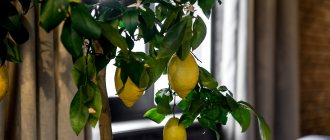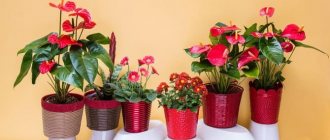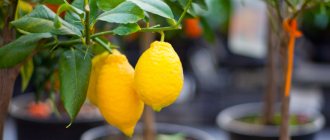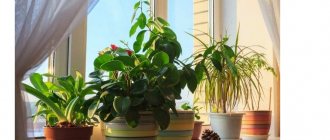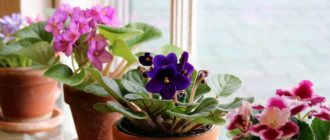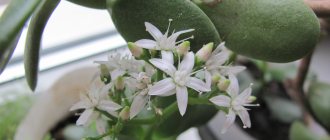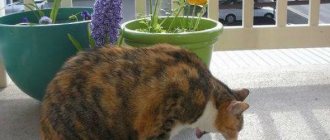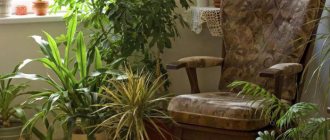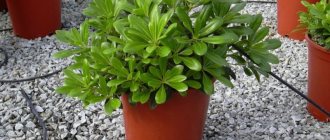Peppermint
This is an easy-to-care bush with an inspiring summer scent.
It is easy to grow at home by planting seeds in the ground or rooting a fresh sprig. Mint loves good lighting, so it should be placed on a windowsill on the sunny side. In order for mint to grow faster, watering should be moderate - only after the soil has dried. Dried leaves of the plant can be used to make sachets, refreshing additions to tea, and also used to prepare cold drinks. Mint can be crushed, placed in a saucer and placed on the edge of the bath during water procedures: hot steam will enhance the aroma, turning ordinary bathing into aromatherapy.
Jasmine Sambac
An evergreen indoor vine with an abundance of small snow-white flowers with a wonderful aroma. With proper care it looks noble and elegant. Jasmine Sambac is one of the most unpretentious species that can withstand warm indoor wintering.
Flowers appear from March to October, their smell is spicy, sweet, and may seem heavy - it’s not for nothing that jasmine is called the king of scents.
Perfume compositions for perfumes and cosmetics are created based on the plant. The flowers can be added to tea leaves as a natural flavoring.
scented geranium
People affectionately call geranium “grandmother’s flower.” Unpretentious, easily takes root in the apartment (even on the desktop). Tolerates infrequent watering, grows well both in the shade and in the sun. The plant has a delicate aroma, similar to the smell of a rose, which has a calming effect.
Fragrant geranium not only blooms and smells pleasant, but also releases essential oils that purify the air in the room.
The flower is in demand in the perfume and cosmetics industry as a substitute for expensive rose oil.
Laurel
A beautiful slow-growing shrub that, with proper care, will become a small tree. Its leaves have a piquant herbal aroma that is familiar to everyone.
The plant loves the sunny side and good watering. Once a month the leaves need a shower, after which they exude the most delicate aroma of laurel.
To use fragrant bay when cooking, cut off old shoots with leaves at the root and dry.
The most fragrant plants, instead of any flavorings
There are many reasons to grow plants indoors - they purify the air, soften and infuse our decor with nature, and reduce stress. There is a stunning array of leaf colors and textures to brighten up even the shortest and most miserable winter days. But that's not all: choose them carefully and they will also provide a scent in your home.
, from rich and floral to warm and spicy.
Let's take a look at some of our favorite scented houseplants.
Fragrant geranium (pelargonium)
Start exploring the world of scented geraniums and you will be amazed by the range of scents they offer: from rose, lemon, lime, nutmeg, ginger or chocolate scents to Coca-Cola!
Plus a wonderful assortment of leaf shapes.
Arabian Jasmine (Jasminum sambac)
Arabian jasmine flowers bloom almost all year round if the plant receives enough light. The starry, pure white flowers produce a soft floral scent, plus you can drink tea from your jasmine.
This is a bush vine.
Citrus
You will definitely fall in love with the sweet scent of orange, lemon, grapefruit or other citrus flowers. Most of them are surprisingly easy to grow, provided you give them enough light.
If you are patient, you can even enjoy homegrown fruits.
Eucalyptus
While most gardeners don't think of eucalyptus as a houseplant, this easy-to-grow tree makes a beautiful accent in a well-lit room. It produces blue-gray foliage with a distinct scent when you touch it.
Laurel (Laurus nobilis)
An attractive slow-growing shrub that can become a small tree, the leaves have a piquant herbal aroma of a favorite spice.
Use the leaves in soups, stews and other delicious winter treats.
Gardenia
One of the most fragrant flowers, but it is a difficult houseplant to grow.
White flowers exude a heavy floral aroma.
Stephanotis
A favorite flower for wedding bouquets, stephanotis displays star-white flowers with a waxy texture. Each bloom emits a delightful floral scent. It is attractive even when not in bloom due to its glossy dark green leaves.
Murraya paniculata
It delights the nose as much as the eyes when it begins to bloom in clusters of white flowers.
Begonia "Tea Rose"
Begonias are an old-fashioned favorite that never goes out of style. While most of them are not scented, you may find varieties like "Tea Rose" among them. This beauty offers clusters of fragrant pink flowers over glossy green leaves.
Orchids Corsage (Brassolaeliocattleya selections)
Showy corsage orchids are so beautiful that they don't have to smell good. But like begonias, there are some varieties that are surprisingly fragrant.
Orchid Oncidium
There are hundreds of species of fragrant orchids. While corsage types are among the most colorful, oncidiums are among the easiest to grow.
Oregano (Plectranthus amboinicus)
A large-leaved plant with a distinct spicy aroma of oregano, an easy-growing relative of Swedish ivy. You can cook with its fleshy green leaves or just touch them to smell them.
Passion flower (passionflower)
Among the most exotic plants you can grow indoors, passionflowers have whimsical, almost alien-like flowers. Not all of them are aromatic, so check the descriptions to make sure you get the aromatic option.
Hoya
Easy to grow vines, many with waxy, sweetly scented pink or white flowers. Their glossy, dark green leaves are attractive even when the plants are not flowering.
Brugmansia
Brugmansia in full bloom is a sight to behold.
Be aware, however: this is not a good plant for beginners, and all parts are extremely poisonous.
Plumeria
A tropical tree known for its beautiful flowers and amazing aroma.
Plumeria can be a little tricky to grow and is not recommended for beginners. But if you can do it, you won't regret it.
Hoya fleshy
A climbing ampelous vine, intended for vertical interior decoration, is distinguished by elegant, white and pink star-shaped flowers, collected in umbrella-shaped inflorescences. They have a strong spicy aroma, similar to the smell of liqueur.
If you place a profusely blooming hoya in a small room, the pronounced aroma can cause slight dizziness, so we recommend placing the plant in spacious rooms.
Hoya needs plenty of watering, but does not like dampness. Tolerates sunlight calmly.
Plumeria
With the onset of spring, the stems of the plant are covered with closely spaced pink, white, lilac buds with a soft yellow core. The rooms are filled with a sweet aroma with many notes: spicy, citrus, tart, berry.
Despite the fact that plumeria is afraid of drafts, in the summer it needs fresh air, so “walks” on the balcony are a must. It is important to remember that the sap of the plant is poisonous, so if it gets on your skin, you should rinse it thoroughly with running water.
Indoor rose
A rose bush in a pot looks elegant and charming, having a beneficial effect on a person not only with its appearance, but also with the aroma of the flowers. And although roses are less common at home than in open ground, they are becoming increasingly popular thanks to the wide selection of varieties.
Those who grow roses at home note that they smell more fragrant indoors than outdoors.
It is believed that the delicate scent of roses reduces irritability and helps normalize metabolism. Dry air and an abundance of direct sunlight are contraindicated for the plant.
The smelliest houseplants
Let's look at the most interesting types of house flowers that smell bad.
Orbea
A perennial, low-growing succulent native to South and South-West Africa. Its leafless, fleshy stems have four faint edges, which, depending on the species, may be glabrous or slightly pubescent.
Orbets are especially beautiful during flowering , when five-pointed stars with a central raised disk in the middle open at the tops of the shoots. It was this disk that gave the name to the genus (Latin Orbis - ring, disk).
The flowers last a long time and their fleshy petals often have a fantastic pattern of strokes and dots. They, like shoots, can be pubescent and bare.
The flowers emit a smell of rotten meat that is attractive to insects but unpleasant to humans.
Interesting . The status of a separate genus assigned to this plant was canceled and they began to be classified as Carallum, Stapelia, and Orbeopsis. Only at the end of the 20th century, the orbaea again acquired independence and includes more than 30 species.
Geranium
For centuries, geranium or pelargonium has been used to decorate balconies, gardens and home interiors.
It is impossible not to be delighted with geranium flowers. No wonder the ladies of the court decorated their dresses and hats with them. By the way, in addition to being beautiful, they also repelled lice and fleas.
Most beautifully flowering pelargoniums have an unpleasant odor. It is not the flowers of pets that smell, but the leaves . This is how they protect themselves from temperature influences.
People with frayed nerves usually like the smell of geranium, but for a healthy person it can cause headaches. But if you don’t disturb the plant, don’t pick off the leaves, then the smell won’t cause any trouble, but the plant can be useful as a cure for diseases.
Geranium phytoncides, according to scientists, have the same properties as garlic and onion phytoncides.
Interesting . The royal geranium got its name not for the exquisite beauty of its flowers, but because it helped King Charles I overcome insomnia.
Nepenthes
Nepenthes is a real curiosity. He is a predator .
The plant is a shrub or semi-shrub vine. A lover of the sun's rays, it is capable of climbing tree trunks tens of meters.
In addition to the usual leaves with a convex midrib, it also has leaves from the ends of which hang jugs - traps. In different species they differ in shape, color and size. Some can reach 30 and even 50 cm.
With the help of such jugs, the flower catches insects, attracting them with its smell . And not only insects, Nepenthes Raja can even catch a lizard, bird, toad or rat. The victims of the flower drown in the digestive fluid and are digested after 5-8 hours, delivering the necessary nutrients to the plant.
Interesting . In nature, certain species of Nepenthes also feed on the droppings of the mountain tupaya, which climb onto the plant like a toilet. And in Kalimantan, bats use pitchers as houses for sleeping.
The name of the carnivorous plant comes from the mythological herb of oblivion, nepenf. This flower also has other names: pitcher, flycatcher, monkey's cup (monkeys drink rainwater from pitchers), hunter's cups (the upper level of the liquid can be drunk).
Most often, Nepenthes are grown in greenhouses, but many hybrid plants adapted to indoor conditions have also appeared. When purchasing such a plant, you need to understand that you will have to feed it with flies, moths, and mealworms.
They also suggest feeding him shrimp, pieces of sausage, and fish food. The better you feed the plant, the more jugs it produces .
Stapelia
This inhabitant of the African deserts is often mistaken for a cactus, but this succulent belongs to the palm family.
A modest bush of leafless fleshy stems branching from below, usually tetrahedral in shape, it amazes with its extreme colors, thanks to which it is considered one of the most unexpected plants. And the stunned Goethe called them the most beautiful and the most monstrous flowers.
Resembling a guest from the depths of the sea - a starfish with a regular five-pointed shape, often covered with hairs and emitting the smell of rotten meat, they frighten and fascinate at the same time. Some consider them mysterious, while others consider them devilish.
There is a legend that a beauty named Stapelia rejected the love of a sorcerer, saying that it was better to remain chaste than to respond to the love of men who stuck like flies. And he turned her into this strange flower.
In fact, it is named after the doctor Stapel from Holland.
Reference . There are other names - star cactus, order star, starfish and even toad flower.
Amorphophallus
This is the largest of the indoor flowers with a disgusting smell. The inflorescence of some species can be 2.5 meters high .
The British politely compare its aroma to that of bad fish, but many botanists believe that it has the most unpleasant odor of all plants, reminiscent of a mixture of decaying fish and rotten eggs.
Another name for the plant is corpse flower . True, it only smells when you touch it. In India it is called snake palm or voodoo lily.
Attention! It blooms once every ten years.
A tuber weighing about 5 kg usually produces a single leaf (rarely two or three), reaching up to several meters in width. Every year a new leaf grows, more dissected than the previous one. It resembles an elegant crown and gives the plant the appearance of a small tree.
Bulbophyllum orchids
And although Confucius compared the words of loved ones with the most delicate aroma of orchids, among these fantastic flowers there are also those that are pollinated by flies and have a corresponding disgusting smell.
There are many such plants among Bulbophyllums. In this genus there are flowers with the smell of chlorinated water, rotten salmon, boiled cabbage, mold, sour sweat and even cat urine .
Lavender
A purple herbaceous plant with a soothing aroma. Often used as an ingredient in various skin care products and sachets, lavender can also be added to tea and some salads.
Helps with insomnia, repels insect pests. Suitable for those who do not like strong scents.
Lavender looks best in a ceramic pot. Requires moderate watering and a drainage layer.
Safe fragrant indoor plants for comfort and tranquility in the home
Filling your home with exotic aromas is not a problem today. But if you are not tempted to surround yourself with “sea freshness,” fragrant indoor plants will come to the rescue.
The right selection of green friends will give your home an exquisite fragrance and a good mood for you. You just need to follow a few rules when arranging colors in rooms. Otherwise, the effect may be the opposite. Find out what you can grow in your bedroom and how to best green your kitchen and living room.
- Houseplants for scent in the bedroom
- Fragrant plants for common rooms
- Indoor fragrant plants in the kitchen
Houseplants for scent in the bedroom
Probably the most recognizable and widespread fragrant indoor flower is geranium . The famous rolls have been decorating the window sills of city apartments for many years. This plant has received such widespread recognition for a reason: its fragrant smell has healing properties.
According to recent studies, the aroma of geranium can easily cope with stress, give a boost of positive emotions and even help improve vision.
A large selection of modern varieties allows you to choose the scent to suit your taste. Lemon, lemon balm, rose, and even chocolate and Coca-Cola - this is not a complete list of fragrant compositions of affordable and easy-to-care geranium.
To get rid of insomnia, place plectranthus . This unpretentious plant is often called home or indoor mint. The fleshy leaves of plectranthus produce the same pleasant, soothing aroma as its close relative, peppermint. And this is not the only similarity.
Homemade mint can be added to tea or used as a seasoning for various dishes. Even beginners in floriculture can care for plectranthus. Good watering and a bright room are all this indoor plant needs with a pleasant aroma.
If experience allows, you can purchase an equally useful indoor plant - lavender . This valuable essential oil shrub is famous for its pleasant aroma, but requires some skills for cultivation and care.
Lavender feels great on the south side in a well-ventilated area, but without drafts. The soil for it is selected to be sandy with a small addition of lime. You should not be overzealous with watering; the soil should dry out between them.
Another fragrant helper in the bedroom can be any citrus tree . At home, you can grow indoor lemon, orange, tangerine, calamondin and even grapefruit. With proper care, these plants will give not only a pleasant sweet aroma, but also home-grown fruit.
There are no obvious rules for arranging flowers around the apartment, however, many fragrant indoor plants should not be kept in the bedroom. It’s better to give them a place in the living room or another room.
Fragrant plants for common rooms
Gardenia is a beautiful, but capricious flower. Its bright green, glossy leaves are eye-catching, and its flowers are fragrant with a rich floral scent. This plant belongs in a well-lit living room. Just remember to carefully protect the beautiful gardenia from any drafts.
Exotic guests - orchids . It is difficult to find fragrant species of this flower on sale. However, if you are lucky, you will be able to enjoy extraordinary aromas.
Orchids imitate the smell of flowers, just as a nightingale imitates other birds. Therefore, among these imitators of the flower world there are many who smell like roses, hyacinth, lily of the valley or lilies. There are specimens with the smell of candy, coffee or chocolate. The signature scent of the orchid is considered to be vanilla.
A miniature rose will decorate any room with its presence . The bright and at the same time delicate aroma of the plant has a positive effect on well-being and is considered a powerful aphrodisiac.
Rose is the recognized queen of flowers. And like any queen, even an indoor one, she is slightly capricious. There is no place for it near a radiator or a south window, as overheating will be simply destructive.
Indoor fragrant plants in the kitchen
A garden of herbs on the windowsill will give the kitchen a pleasant aroma of something delicious. The tantalizing smell of spices will increase your appetite and have a beneficial effect on digestion. When choosing plants for your fragrant garden, trust your taste. Peppermint (savory), catnip or rosemary will look great in pots.
Cuban oregano, also known as broadleaf thyme, is also suitable for keeping at home. The plant does not require complex care and grows easily in sunny places where there are no drafts. Watering should be kept moderate, as excess water will be harmful.
Noble laurel is just as unpretentious . The fragrant leaves of this shrub are familiar to all cooks. So why not make it a useful addition to your kitchen decor? In addition, laurel has healing properties. Its smell is useful for inflammation of the respiratory tract and intestinal spasms.
Citrus indoor plants with fragrant leaves and fruits, which were already mentioned earlier, are perfect for the kitchen. The smell of lemon will lift your spirits and help drive away fatigue and anxiety. The aroma of orange or tangerine will increase concentration, improve memory, and give a charge of vigor and optimism.
But no matter what part of the house the improvised fragrant garden is located in, the main thing is to avoid excessive concentration of the smell. To do this, you need to make sure that several plants do not bloom at the same time. Or place them in spacious and well-ventilated areas.
Araucaria
An elegant coniferous tree with bright green needles that can be grown in an apartment. Its natural forest smell saturates the air with phytoncides, filters and moisturizes it, which helps improve the microclimate in the house. In December, the plant can be decorated instead of a Christmas tree - its aroma will give you a New Year's mood.
Rarely grows above 2 meters. Needs coolness - the most comfortable temperature in summer is 20 degrees, and in winter about 10.
The delicate scent of the listed plants is a worthy alternative to air fresheners and interior perfumes. Make sure that the concentration of essential oils contained in them does not cause headaches - for this, air circulation must be constant.
Myrtle
Myrtle has one of the best sedative aromas. The flower releases into the atmosphere the fragrance of essential oils that have bactericidal and calming effects.
One of the most common house flowers that helps purify the air. A plant with an amazing mild effect, the aroma of which helps create a unique atmosphere of home comfort.
